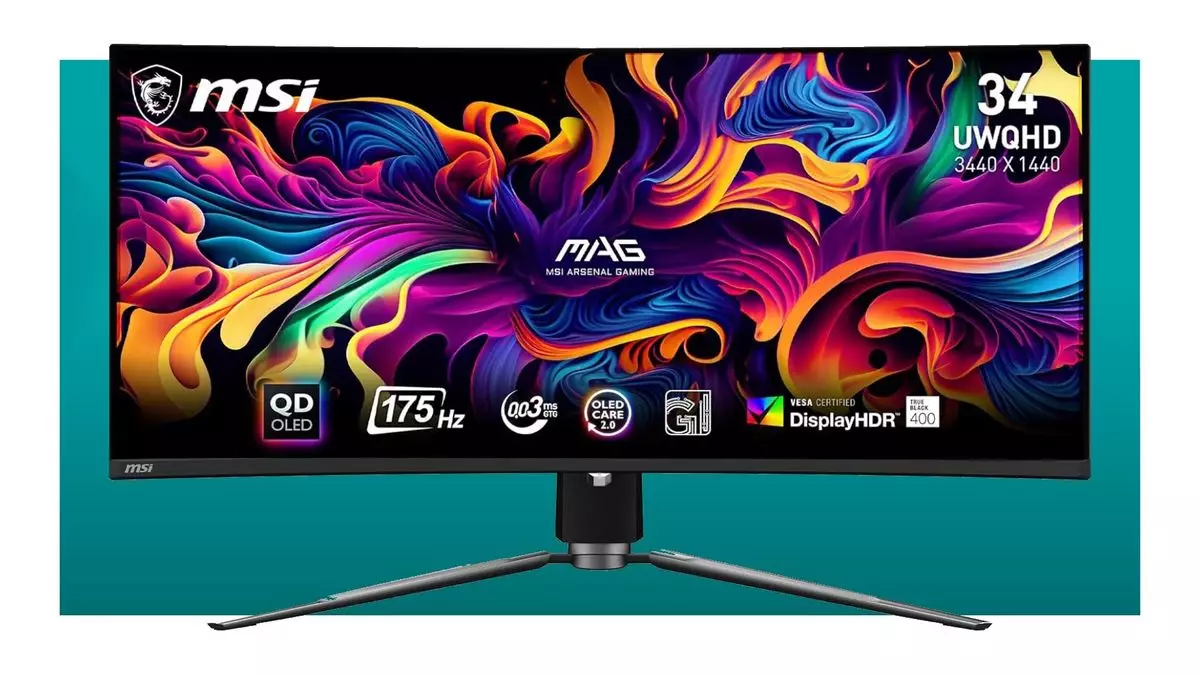When it comes to selecting a monitor for gaming and professional use, the debate centering on whether to opt for a 32-inch 4K display or a 34-inch ultrawide is one that enthusiasts frequently find themselves entangled in. This article explores the merits and drawbacks of both options, with a spotlight on the MSI MAG 341CQP, a commendable contender in the ultrawide category.
At first glance, the specifications of both monitors offer a compelling case for each side of the discussion. The 32-inch 4K display, like the MSI MAG 321UP, emphasizes remarkable detail and pixel density, translating to crisp visuals that are ideal for a variety of content consumption—be it gaming, professional design, or casual streaming. With a resolution that exceeds eight million pixels, the clarity offered is undeniable.
Conversely, the 34-inch ultrawide display, such as the MSI MAG 341CQP, presents a different type of visual experience. The ultrawide format—with its 3,440 by 1,440 pixel grid—creates an immersive wrap-around effect that draws the viewer into the action. This is particularly appealing for gamers seeking an engaging experience that maximizes peripheral vision. The appeal of these technical attributes creates fertile ground for an ongoing comparison between the two styles of monitors.
Cost plays an undeniable role in this decision-making process. The MSI MAG 341CQP is available at $680, positioning it as one of the most affordable ultrawide options on the market. In contrast, the MSI MAG 321UP retails around $800 for a 4K experience, which might seem appealing at first glance. However, one must also factor in the necessity of investing in a higher-end graphics card. Achieving seamless 4K gaming typically demands a GPU worth anywhere from $900 to $1,000, inflating the overall expenditure significantly.
In contrast, the lower pixel count of the 34-inch ultrawide monitor enables more flexibility in GPU choices, allowing a competent card like the Nvidia RTX 4070 Super—worth approximately $600—to deliver an enjoyable performance. Therefore, when taking total costs into account, the ultrawide option appears significantly more budget-friendly.
Quality of image is perhaps the most critical issue when choosing a display. The Samsung-based QD-OLED panel of the MSI MAG 341CQP excels in delivering vibrant HDR content with impressive full-screen brightness. Additionally, a remarkable pixel response time of just 0.03 milliseconds ensures that even the fast-paced action of competitive gaming is rendered seamlessly, providing players an edge in quick-draw situations.
The refresh rate sits at a respectable 175 Hz, which, while slightly lower than some of its faster counterparts, should serve well for the majority of gamers. Only the steeliest competitors would need to meticulously weigh the latency gap against higher refresh rates like 240 or 360 Hz.
On the downside, the potential for burn-in common in OLED technology remains a concern; however, most modern iterations, including the latest from MSI, show only mild evidence of this phenomenon during long-term usage. Furthermore, the three-year burn-in coverage provided offers reassurance to potential buyers.
Ultimately, the decision between a 32-inch 4K display and a 34-inch ultrawide isn’t simply rooted in specifications and costs. It heavily depends on individual user needs and preferences. If detail and resolution are your primary concerns, and you’re willing to invest in a high-end graphics card, the 4K option might be the better fit. However, for gamers and users focused on a more immersed experience without the looming costs of top-tier GPUs, the MSI MAG 341CQP opens up compelling new avenues.
In the end, the more affordable ultrawide option enriches the experience of users who prefer broader views and a more encompassing field of sight, showcasing the evolution of display technology that caters to various preferences and budgets. Each choice carries with it a unique array of experiences, and thorough consideration will ultimately lead to the best decision for any user.

